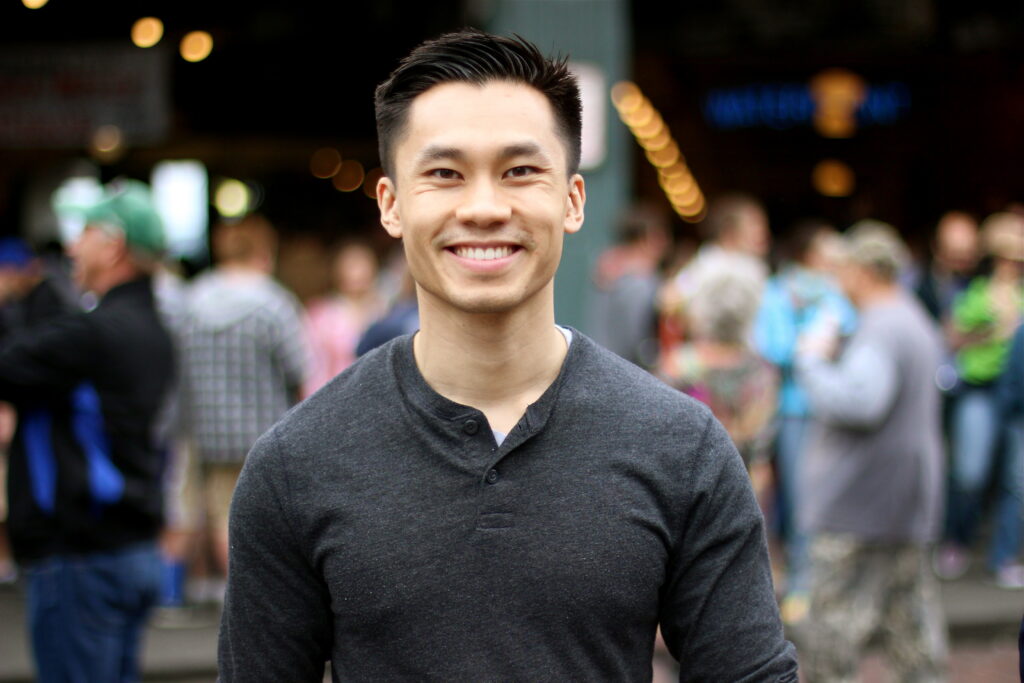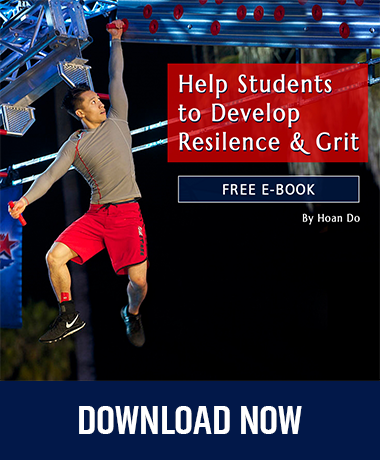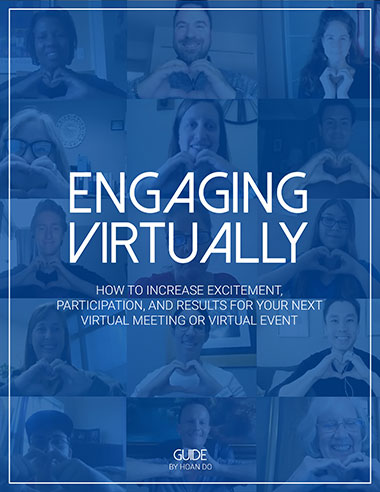
Adaptation and Virtual Engagement with Students
NACA Coffee & Conversations held an in-depth webinar addressing virtual engagement of students, hosted by Becky Riopel, from Cascadia College in WA. Questions were posed to several panelists.
1) What have you learned so far in this current shift?
Tiago, from NY, said that he is having to think more about students and their needs, specifically keeping in mind Maslow’s Hierarchy of Needs. He reflected that they are learning there is a lot more happening than they realize around students not having access to the internet and stressed the need to take care of students in that regard. His focus is on strengthening connections with students, to shift some programs to life-sustaining subjects such as cooking demos, auto mechanic partnering, anything that will help students survive at home in addition to school. From a staff perspective the focus is on keeping staff working, creating a space for them, and maintaining some sense of normalcy. His school was already switching over to online programming, so they had some tools in place, they were just not ready to shift so soon.
Heather, from Spokane, WA, reflected that “I am not a whiz at anything,” it’s okay to give myself a lot of space to juggle home life, full-time profession, and maintain a lot of daily Zoom calls. She admitted that she doesn’t like to be at home and not around other people (other than her children); she is extroverted and needs time with people, but she is “learning to roll with it,” and be okay with being okay. She is open to other’s ideas to help her be successful. She states that it is our norm now but not forever, that moving forward it will be easier.
LaShandra added she has learned the importance of resiliency throughout this shift, as well as being nimble; having moments of slow movement, taking time to make decisions as they did not have time to form a committee. She also reflected seeing the community coming together during this transformation.
2) How are you adapting to fast change in tech needs and software used?
LaShandra said that she is using Zoom as well as Microsoft Teams for different teams within the school in order to communicate.
Tiago echoed using Zoom and reflected that he has been starting to learn more about it during this time and using the chat feature outside of calls, having individual calls, and to connect more regularly. He has seen security issues with Zoom regarding Zoom Bombing and is taking precautions. He is also using Google Sheets, Google Technology, and Google forms to aid in collaboration. He finds that Zoom paired with Google features is more successful. He said the hardest part of adapting is that people feel the need to constantly be busy, and he stresses the importance of remembering that it is okay to take breaks.
Heather says that they use Microsoft Teams, Campus 365, Microsoft Teams (which she claims has good features like, quick calls, phone or video calls within apps), Google. They also have a campus app to reach out to students which students use frequently as it has similar functions as Facebook, i.e., alerts, campus resources, information, whatever staff load the app with, and it’s in real time. They are finding that email is not so successful to stay in touch with students as they do not always use email. Heather suggests a useful app called OohLaLa that customizes needs for first year, IT departments, Student Life, etc., claiming that they do all the back-end work for you.
3) How are you managing access to student support resources?
LaShandra said that they are meeting as a district to discuss how to engage and connect with students. She mentioned that students are having a difficult time adjusting to the changes.
Tiago said that they have a broad audience from different areas on campus. The student support service office is assisting them with social media COVID-19 sources. They have access to SGA and reach out to as many students as possible for support. They are also able to connect with the alumni who still follow campaigns.
Heather said that they use the OohLaLa app to reach students, as well as using social media to reach them where they are, currently. They have partnered with campus services to get information from them to put on their apps in order to extend their efforts at reaching out and connecting.
Becky mentioned that they have a food resource center and food pantry component to their resources as well, where students can fill out an online google form, including a picture of themselves as verification. They offer curbside pick-up as well as offering 10 deliveries within a 10 mile radius of campus at designated times during the week.
4) What have been your wins with virtual engagement and student organizations?
LaShandra said that each staff takes on a number of students to call and do wellness check-ins; they have received good responses from students who are “shocked,” and “grateful.” The president also does check-ins as well. This allows them to see everyone the president engages with, which normally would not happen. Regarding SGA they hold weekly meetups with someone different every week, a mix of staff and SGA, in order to take engagement to another level and still have the face-to-face interaction.
Tiago said they created a digital office and front desk for student workers, and they opened a Zoom link for staff and students to ask questions and be a sounding board. They are keeping students employed and have created open access for questions. They also started working with local people who are out of work, for example, a local chef from a deli who does cooking demonstrations and having workout instructors do online programs for fitness. This enables them to offer more to students while putting money into and supporting the local community. They maintain connections with NACA and are creating new and innovative sources. Regarding clubs, they froze the budgets with the caveat that they could have access to it if they stay connected and help turn events into digital ones. For instance, the LGTBQ group holds a digital drag show from living rooms that ended with a Q & A on drag culture; film students created films at home and then streamed through VIMEO and other platforms, where judges were invited.
Heather mentioned they engaged a team to do a senate meeting where they all joined in online. A student programmer figured out how to move entire programs online for certain groups. She said the standing grace is to let students be creative in helping to figure out how to adjust.
5) How are you managing student employees?
LaShandra said they host zoom calls with specific office hours, as students are having a hard time navigating Blackboard etc. This enables students to stay connected and be able to contribute while continuing to make income working from a remote “office.”
Tiago joined in saying they extended the number of hours to 20 hours and opened a digital office on Saturdays to have more access and be able to touch base with staff. Staff take turns checking in with students. It also allows staff to jump onto the digital office randomly to get students’ perspectives and feedback on different things while students are working. He commented that students have been receptive to this so far.
Heather mentioned that staff had to fill out telecommunication authorizations and required the same documents from students, saying they understand and agree to the terms. Students are also required to turn in a log of what they did as well as hours worked to justify payment. Workers who cannot be on campus are still receiving pay. The SGA are getting paid through the school and not through federal money, so they have to put the work in. They are in the process of putting together Zoom space to work on homework, projects, and connecting. The student body requires that everyone reach out to other institutions to find out what they are doing and how in order to borrow ideas, as well as inquire how they in turn can be of help.
6) What numbers are you seeing regarding virtual engagement?
Tiago said it depends on the program, that they are trying to be consistent with a schedule, having the same events on the same days every week; they are seeing continued increased engagement. He commented that as students start managing their time they will hopefully start to engage more.
LaShandra said they integrated contests, concerts, and having caricature artists. They anticipated not having much engagement but hope to see the numbers increase as students adjust.
7) Is anyone looking at addressing sexual assault through virtual programming?
Heather said they have a What Were You Wearing program wherein students contributed art installations with descriptions and stories. They are also hiring a group, Students Fight Back, to come in and help create an online component to programming. Administrative staff on their Title 9 group and campus safety, etc., are hosting a panel on how to do investigations.
8) How do you choose the timing of events?
LaShandra said they used to host events between 11am-2pm but shifted to later in the day. Some professors are still doing Zoom on their normal schedule, however. They are taking into consideration how students schedules may be shifting and determining event timing somewhat based on that.
Tiago stated that they pushed their event times to later in the day because a lot of students have families and have to attend to them, so lunchtime is a challenge. Students are more likely to show up around 5pm or so since classes are usually done by then.
9) How do you support students in being “good” online students?
Tiago said that their counseling department is doing daily workshops on different aspects of mental health. This helps a lot of students who are struggling to balance everything. They also have a management workshop for club students and are opening it up to all students. They are helping students learn how to manage distractions. All of this is being put onto youtube for students in a digital format. In addition, they have worked out agreements with different contractors to record sessions that they can put into contracts, an archive for students to access later on.
LaShandra said they are putting out weekly newsletters including a song of the week about washing hands, incorporating tips from professionals, and tips for studying at home.
9) How are you sharing your programming?
Becky said they are sharing utilizing Facebook, Canvas Course for Student Life, and Instagram. She said they utilize SMORE.com for sending out virtual newsletters; it has options to click on for videos and links, and they use this for students to access information on graduation, newsletters, etc.
Tiago said they send one email out on Monday morning and all students know to check their email that day. They also incorporate Instagram, Facebook, and Youtube.
Other participants chimed in with the following: one school moved most of their student resources online and staff host virtual offices via Zoom or Mongoose, with regular office hours. Another said that their local movie theaters have been offering to help by streaming options of theater released films, addressing public broadcasting. Another said that they are using this link to access information on creating a virtual escape room for students. (Warner Brothers has asked to take it down, however, after COVID-19 response is over).
Resources
- Jackbox Games is an online platform for a variety of games.
- Netflix Party a platform for people to come together to watch movies and join in chats
- Oohlalamobile A platform for students to interact, post questions, find information from campus communities
- Campus 365 school ERP software for schools and colleges
- SMORE.com a platform to share newsletters on social media and mailing lists as well as printable.




